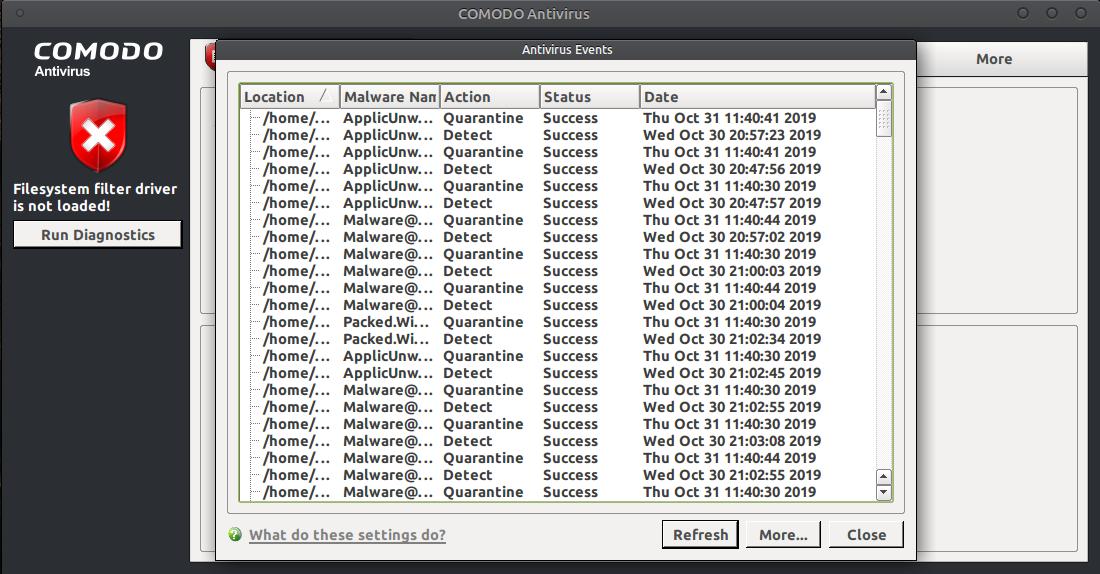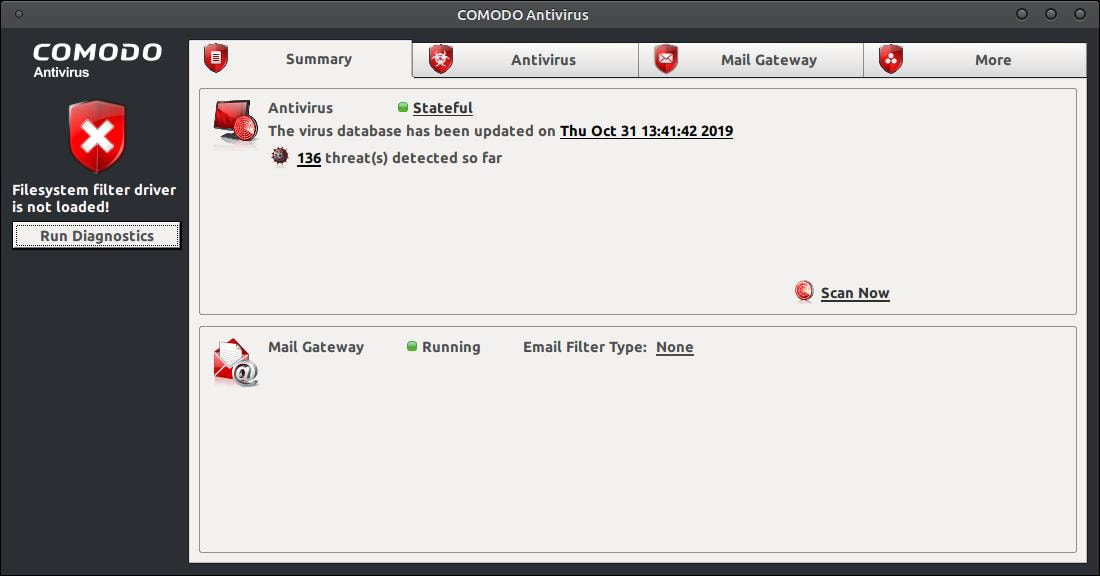
- #Comodo filesystem filter driver is not loaded drivers#
- #Comodo filesystem filter driver is not loaded update#
- #Comodo filesystem filter driver is not loaded windows#
#Comodo filesystem filter driver is not loaded update#
Update information associated with existing altitudes The altitude number you assigned to your new filter.Product/filter description to help Microsoft determine that the filter is in the appropriate load order group.Contact e-mail (long-term company e-mail alias not an individual email).If you create your own fractional value altitude for a new filter, please email with the following information so that we can keep the filter community list up to date: If you have two new filters, you could choose to load them at altitudes such as 325000.00.7 without making an altitude request.Let's say that you were previously assigned altitude 325000 in the FSFilter Anti-Virus group.To do so, simply append a fractional value to your existing altitude. If you already have a Microsoft-assigned altitude, you can create your own altitude to place a new filter in the same load order group. If you don't already have a Microsoft-assigned integer altitude in the same load order group, you need to request a filter altitude. This group loads first and thus attaches closest to the file system.


#Comodo filesystem filter driver is not loaded drivers#
Provided for filter drivers that must attach below all other FSFilter types. Includes filter drivers that check for out-of-band data on media. Includes filter drivers that apply lockdown and enhanced access control lists (ACLs). Includes filter drivers that provide snapshots of already open files. Includes filter drivers that manage quotas by using physical block counts.
#Comodo filesystem filter driver is not loaded windows#
Includes filter drivers that virtualize the file path, such as the Least Authorized User (LUA) filter driver added in Windows Vista. Includes filter drivers that encrypt and decrypt data during file I/O. Includes filter drivers that perform file data compression. Includes ZIP-like filter drivers that provide a virtual namespace. Includes filter drivers that perform hierarchical storage management. Includes filter drivers that are used in products that provide file server metadata across a network. Includes filter drivers that perform operations to maintain operating system integrity, such as the System Restore (SR) filter. Includes filter drivers that provide enhanced file system quotas. Includes filter drivers that prevent the creation of specific files or file content. Includes filter drivers that replicate file data to backup media. Includes filter drivers that replicate file data to remote servers. Includes filter drivers that detect and disinfect viruses during file I/O. Includes filters that recover deleted files. Includes filter drivers that observe and report on file I/O. This group loads last and thus attaches furthest from the file system.įor filter drivers that must attach above all other FSFilter types. Same as the Filter load order group that was available on Windows 2000 and earlier. The load order groups and altitude ranges are listed as they appear on the stack, which is the reverse of the order in which they are loaded. The Altitude range column contains the range of altitudes for a particular load order group. Each entry in the table's "Load order group" column uses the value that should be specified for a group in the LoadOrderGroup entry in the ServiceInstall Section of a filter's INF file. The following table lists the system-defined load order groups and altitude ranges. Types of load order groups and their altitude ranges These instance definitions apply across all volumes. Multiple instances and altitudes can be defined for a filter driver. Instance definitions can also be specified in calls to the InstanceSetupCallback routine in the FLT_REGISTRATION structure.

Companies with a Microsoft-assigned integer altitude can create their own altitudes within the same load order group.Īltitude values for a filter driver are specified in the Instance definitions of the Strings Section in the filter driver's INF file. Microsoft allocates "integer" altitude values based on filter requirements and load order group. A filter driver that has a low numerical altitude is loaded into the I/O stack below a filter driver that has a higher numerical value.

The altitude is an infinite-precision string interpreted as a decimal number. The filter's altitude defines its position relative to other filter drivers in the I/O stack when it is loaded. Every filter driver must have a unique altitude identifier. About altitudesĮach load order group has a defined range of altitudes. A filter's load order group assignment depends on the filter's type (for example: AV, encryption, etc). Windows uses a dedicated set of load order groups for file system minifilters and legacy filter drivers that are loaded at system startup. Load order groups and altitudes for minifilter drivers


 0 kommentar(er)
0 kommentar(er)
